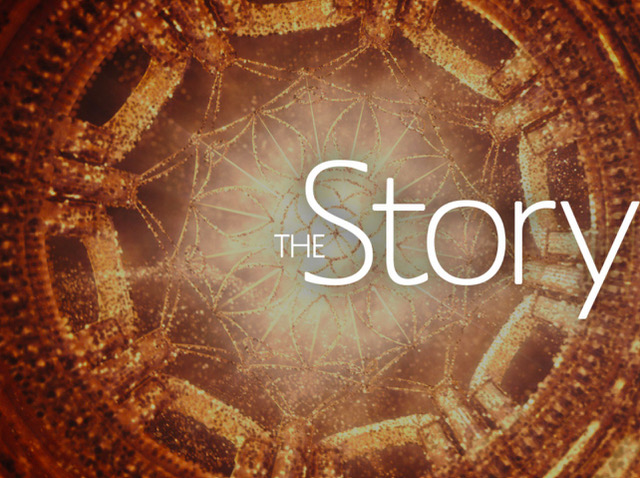I love stories. I love to immerse myself in stories through books and movies. Every story follows a basic three-fold pattern, or three acts of a play: 1) a setup, in which all of the main characters and their basic situations are introduced; 2) the conflict, the bulk of the story, which begins when the inciting incident (or catalyst) sets things into motion, and contains the primary level of characterization; and 3) the resolution, which is when the problem in the story boils over, forcing the characters to confront it, allowing all the elements of the story to come together and inevitably leading to the ending.
The Story—the gospel story, the story of Jesus—follows this same pattern. As I wrote earlier, Matthew 1 gives us the historical background for Jesus’ story by providing a long genealogy. This is the setup that helps us understand the high hopes and expectations that were present in Israel and makes abundantly clear that Jesus is the long-awaited Messiah in the line of David.
Matthew 2 introduces the conflict by revealing the current context into which Jesus was born, which challenges us to banish those romantic, peaceful Christmas scenes we may have conjured up in our minds. Jesus is born to a poor Jewish couple in Israel when the Roman Empire is in control. Herod, the king of the Jews who is aligned with Rome, is the false king, an impostor.
So Jesus was born in a land and at a time of trouble, tension, violence, and fear. As we read this chapter, we see that what Matthew wants his primarily Jewish readers (and us) to understand is that, despite the powers that be, this baby is the true king of the Jews.
There are all kinds of twists and turns in Matthew 2. One of the big surprises is that gentile magi (wisemen or astrologers) come from the East because they are convinced they have seen something in the stars telling them that a king has been born. And when Herod hears about it, he perceives that his power and position are being challenged, even threatened.
As we will see, his response is extreme and violent. Before the Prince of Peace could walk or talk, he was encountering the powers and rulers of the world who wanted to kill him because he was a threat to their power. The shadow of the cross falls over the story from this point on, but the conflict will only be brought to resolution in his death, resurrection, and ascension. We will deal with that later.
The conflict in this passage and throughout the Gospel of Matthew reveals a deep truth. There are really only two ways to live—according to the kingdom of this world or the kingdom of God, or as Matthew calls it, the kingdom of heaven. These two ways of living are opposites and their purposes are in conflict. We have to choose between the world’s way or God’s way.
We see these two ways depicted in the postures of King Herod and the gentile magi. Herod represents the kingdom of self. He is willful and definitely ruled by self-interest. He attained his position by grasping for power, by achieving military success, and by making every effort to hold on to his power and position with a clenched fist and closed heart. He is a hard and brittle man with utter determination to do whatever it takes to remain king.
The wisemen serve as a true contrast illustrating the kingdom of God. They willingly follow a star with a desire to show homage to the newborn king—an act of love, an act of consent. They bring gifts, releasing the best that they have to offer with open hands and hearts. They don’t understand all the implications of these events, but they know something significant has happened, and they want to be a part of what really matters in the world, demonstrating softness of spirit and transformation.
Conflict of power is a reality in our world, in our country, and in our lives today. Every day, every moment we are making a choice as to whether we will participate with God in kingdom living or not. In the weeks ahead we will learn more about what that looks like in our lives.
During this fall season, we are challenging everyone to pray the kingdom prayer (the Lord’s Prayer) every day. Some do not like rote prayers, but this is the prayer Jesus gave us to keep us from praying self–saturated prayers. This kingdom prayer helps us to turn our attention to our loving Father and reminds us of his priorities. As we pray it, God’s thoughts and desires begin to become our own as we pray “thy kingdom come, thy will be done on earth as it is in heaven.” This is a way of letting go and letting God as we say with our heart, mind, soul, and body that we want what God wants (whatever that may be) in our lives, his church, this country, and the world.
I like what Frank Laubach said: “It [the Lord’s Prayer] is the prayer most used and least understood. People think they are asking God for something. They are not—they are offering God something…. The Lord’s Prayer is not a prayer to God to do something we want done. It is more nearly God’s prayer to us, to help him do what He wants done…. He wanted that entire prayer answered before we prayed it…. The Lord’s Prayer is not intercession. It is enlistment.”
Jesus gave us this prayer to enlist us in kingdom living and kingdom mission. May God use our study of Matthew and the practice of praying Jesus’ prayer to help us become the kind of people who are able to live out his will as we truly love the Lord and love the people.


